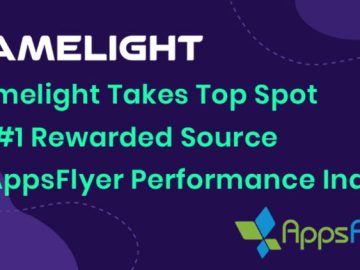Top Products For Enterprise Mobile App Development
Enterprises that are looking to ramp up their mobile app offerings face a large number of options around platforms. And the platform you choose will have a lot to do with who is going to be doing the development. It’s not all about professional developers anymore – with numerous choices available for low- and no-code app creation – though tools for professional developers are flourishing as well. Technology research firm Gartner recently released its 2017 Magic Quadrant For Mobile App Development Platforms, and we went through the report to highlight some of the key findings. In the following slides, we round up the details on the 17 vendors that made this year’s ranking.

Kony: Leader
What it offers: Kony offers a platform for enterprise mobile app creation, the Kony Visualizer, that brings together tools for native design, native prototyping, development and deployment. The platform enables development of low-code apps using JavaScript. Kony’s mobile app development platform also includes backend services (MobileFabric) and an omnichannel engine for mobile and web (the Kony Nitro Engine).

Kony
Strengths: Kony’s mobile app development platform provides “one of the most powerful” integrated development environments available, and the company – one of the few major independent vendors in the space – brings a strong understanding of the mobile market, Gartner said. Key capabilities include a proprietary JavaScript framework that can use all native operating system APIs and controls.
Cautions: Some of Kony’s reseller partnerships, such as with Cognizant, “have not lived up to expectations,” Gartner said. Kony also added fewer new customers last year than many of its peers in the Magic Quadrant. Meanwhile, there are questions about whether Kony will be able to remain an independent vendor due to “significant” venture capital investments made into the company during the past decade, which will ultimately demand an exit strategy, Gartner said.

Mendix: Leader
What it offers: Mendix’s application platform specializes in enabling the development of apps quickly – without the need for code – through visual modeling of full-stack applications and leveraging reusable app building blocks. The platform is cloud-based , running on Cloud Foundry, and most customers deploy it in public cloud environments. Mendix moved from the Visionaries quadrant in the 2016 Gartner ranking into the Leaders quadrant this year.

Mendix
Strengths: Mendix rates high in its market responsiveness, with updates released every month, and the company hosts an app store with numerous contributions from partners and customers. Mendix’s tools and processes are also highly approachable, encouraging “high-speed, large-scale, collaborative app creation” by customers, Gartner said.
Cautions: Mendix remains narrow from a geographic penetration standpoint, with most of its customers located in Europe, though its customer base in the U.S. is growing. Mendix also markets to the business side rather than the IT side of organizations, so the offering “has not generally appeared on the radar of enterprise IT leaders,” Gartner said.

Microsoft: Leader
What it offers: Following the acquisition of Xamarin, Microsoft has largely kept the product intact while integrating it into the Visual Studio division. Microsoft offers front-end development tools via Xamarin and Visual Studio along with a suite of mobile services (courtesy of Azure), DevOps and lifecycle management for apps (through the Visual Studio Mobile Center), app testing and analytics.

Microsoft
Strengths: Microsoft’s mobile app development offering for professional developers is among the broadest, Gartner said; the offering supports iOS, Android, Windows, Cordova, React Native and Unity. Omnichannel support is strong, as is Microsoft’s understanding of the needs of professional developers.
Cautions: There’s less strength in terms of meeting the needs of high-productivity app-building, as Microsoft’s PowerApps tool is an independent offering, and Xamarin doesn’t have every high-productivity feature that certain developers are looking for. Customers have also told Gartner that they are unhappy with Microsoft’s “lack of communication about its product roadmap” and with its in-depth documentation. In addition, Microsoft’s pricing for its mobile app development platform is complex, Gartner said.

Oracle: Leader
What it offers: Oracle touts a variety of features for its Mobile Application Accelerator, including the enablement of no-code construction of apps (in tandem with Oracle’s cloud-based app development platform, the Mobile Cloud Service). Oracle’s Mobile Application Framework enables the deployment of the same code to iOS, Android and Windows 10, and the development of apps through utilizing open standard technologies such as Java, HTML5, JavaScript and CSS. Oracle moved from the Challengers quadrant in the 2016 Gartner ranking into the Leaders quadrant this year.
Oracle
Strengths: Oracle was highly rated by customers in Gartner’s survey this year, with customers praising the Mobile Application Accelerator, as well as the cloud architecture and integration capabilities. Oracle has also made mobility a much larger focus in its overall corporate strategy, which has led to a significant amount of investing in product and a ramp-up in sales — both through partners and its own sales force.
Cautions: Most of Oracle’s success so far has been with existing customers of the company’s products, despite an emphasis on being backend agnostic. Oracle also doesn’t rate highly in terms of vertical-specific expertise for its mobility offering.

OutSystems: Leader
What it offers: OutSystems aims to stand out with features for quickly building and deploying apps, such as visual development and single-click deployment. The platform also enables in-app feedback and automatic updating of queries when databases are changed. OutSystems moved from the Visionaries quadrant in the 2016 Gartner ranking into the Leaders quadrant this year.

OutSystems
Strengths: OutSystems received above-average marks in overall customer satisfaction, according to Gartner. Among the strong points mentioned by customers, Gartner said, were seamless support for web and mobile apps in a single environment, speed, and reliability.
Cautions: OutSystems hasn’t provided frequent updates to its product, with only two major releases so far (one in 2015, and one in 2016). The platform’s analytics are also not among the most sophisticated, meaning that third-party tools may be a necessity.

Progress: Leader
What it offers: Progress’ Telerik offering is a broad-reaching mobile app development platform, and includes a high-productivity development tool (Telerik AppBuilder) that leverages Progress’ NativeScript, a JavaScript-based framework. User interface components cover the web (Kendo) and Xamarin, while native UI components for iOS, Android and Windows 10 are also offered. Progress moved from the Visionaries quadrant in the 2016 Gartner ranking into the Leaders quadrant this year.

Progress
Strengths: Progress has demonstrated a good understanding of the needs of developers and enterprises, and its products and messaging are resonating as a result, Gartner said. Progress is increasingly seen as an enabler of app architecture modernization, lower-cost management of infrastructure and delivery of scalable systems.
Cautions: While Progress’ developer-oriented messaging has helped to galvanize its developer base, the messaging “does not necessarily translate into business and C-level value” for its app development platform, Gartner said. Progress also has a relatively small number of direct salespeople and resellers involved with selling the product to enterprises.

Salesforce: Leader
What it offers: Along with offering plenty of choices for developers around tools and environments for app development, Salesforce’s App Cloud Mobile product offers options around working on apps while offline and designing massively scalable mobile back ends on Heroku. The platform’s Lightning tool, meanwhile, provides a visual app builder for high-productivity development.
Salesforce
Strengths: Salesforce’s offering strategy is broadly applicable to a range of use cases covered — from visual development tools for administrator users, to SDKs for professional developers. The company’s app platform tools “make mobile app development more accessible and approachable for enterprises, particularly for their business users,” Gartner said.
Cautions: Connecting with third-party data sources is “less flexible and extensive” in Salesforce’s platform than in some competing vendors’ offerings, Gartner said. Pricing can also be high by comparison, which was an issue reported to Gartner by some customers, and a lack of detailed app analytics are a shortcoming.

DSI: Challenger
What it offers: DSI provides a mobile app development platform that is primarily aimed at on-premises environments, though a cloud deployment is available. Tools for rapid mobile app development are offered, as are professional code-centric development for iOS, Android and Windows. DSI moved from the Niche Players quadrant in the 2016 Gartner ranking into the Challengers quadrant this year.

DSI
Strengths: DSI has grown to serve a large customer base even without taking venture capital funding, which makes it one of the most viable vendors in the mobile app development platform space, Gartner said. DSI rates highly for its messaging to business, IT and supply chain executives, as well as for its level of R&D investment.
Cautions: DSI doesn’t have as much reach into developer communities, which somewhat hamstrings adoption within enterprises. The company’s focus on supply chain functionality has also led to less emphasis on meeting market needs such as mobile DevOps support.

IBM: Challenger
What it offers: The IBM Mobile Foundation platform — deployable in on-premises, cloud-native and hybrid environments — offers full app lifecycle management. There’s also an emphasis on providing end-to-end security, and differentiators include cognitive computing services via Watson. IBM moved down to the Challengers quadrant in the Gartner ranking this year from the Leaders quadrant in 2016.

IBM
Strengths: IBM’s offering is among the most secure mobile app development platforms available, according to Gartner. The platform also rates highly on core mobile services such as lifecycle management, backend integration, and analytics. Mobile DevOps support is another strength, Gartner said.
Cautions: Some on-premises customers reported complexity of deployment and management. IBM’s platform is also limited by a lack of low- or no-code development tools.

GeneXus: Challenger
What it offers: GeneXus’ platform enables the generation of native code for iOS and Android, which developers can edit with either native tools or GeneXus’ integrated development environment. The platform is only deployed on-premises. GeneXus is a newly added vendor in Gartner’s Magic Quadrant this year.

GeneXus
Strengths: Customers surveyed by Gartner rated the platform highly on stability and ease of use, along with its capabilities for rapid app development. The platform is also suited for a wide range of industries, Gartner said.
Cautions: GeneXus is strongest in Latin America and may face barriers regarding expanding outside the continent, due to a reliance on selling through regional partners and competition from larger players in other regions. The company also has little name recognition and a relatively small engineering team.

Pegasystems: Visionary
What it offers: Pegasystems’ platform is aimed at public cloud deployments, though hybrid and on-premises deployments are also supported. Pegasystems offers options for business mobile app development including point-and-click workflow and pre-configured templates.

Pegasystems
Strengths: Pegasystems’ high-productivity development tool is both very powerful and easy to use, a rare combination. The company has also invested significantly in the platform and sees it as a core part of its overall offering.
Cautions: Pegasystems rated low in overall customer satisfaction in Gartner’s survey, with issues reported such as trouble with getting offline and UI functionality tuned correctly. Prices are also comparatively high, and the platform hasn’t resonated as well with developers and IT leaders as it has with business executives.

Adobe: Niche Player
What it offers: Adobe has shifted its focus from offering a full mobile app development platform in favor of its Experience Manager Mobile product, which targets marketing professionals. The product enables repurposing existing content for use in a business app, such as through sharing assets in Adobe Creative Cloud and Document Cloud. Adobe moved down to the Niche Players quadrant in the Gartner ranking this year from the Leaders quadrant in 2016.

Adobe
Strengths: While targeting the mobile app creation needs of marketing professionals is a niche area; Adobe does fill a need that few mobile app development platforms have addressed, Gartner said.
Cautions: Adobe’s licensing revenue related to its mobile app development platform has declined significantly over the past year, according to Gartner. The shift in focus for Adobe’s app development product line “creates uncertainty about Adobe’s long-term investment in addressing broader enterprise mobile app development needs,” Gartner said.

Appcelerator: Niche Player
What it offers: Appcelerator (now owned by Axway) enables the development of native apps, written in JavaScript, for any operating system. Mobile test automation, connections to data sources and measurement (for metrics such as usage and adoption) are other key features.

Appcelerator
Strengths: Appcelerator rates highly regarding market responsiveness with regular platform updates, and its marketplace for components and connectors enable developers to expand app functionality. The acquisition of the company by Axway, meanwhile, has provided by both viability and a ramp-up in sales.
Cautions: One concern expressed by customers is a lack of developers that are skilled in working with Appcelerator’s platform. The company’s tools also lack enterprise features such as pre-integrated offline support and are lagging in areas such as behavioral analytics.

i-exceed: Niche Player
What it offers: I-exceed offers the Appzillon mobile app platform, a cloud environment for building iOS and Android apps that support the generation of app binary files on a PC. Capabilities include a drag-and-drop use of templates in app creation. I-exceed is a newly added vendor in Gartner’s Magic Quadrant this year.

i-exceed
Strengths: I-exceed’s Appzillon platform has been well-received by customers, according to Gartner’s survey. Partners Cognizant and Wipro have played a role in customer satisfaction by providing customer support as well as a kit on how to use the platform, Gartner said.
Cautions: Much of i-exceed’s customer base is in the financial services industry (banking, finance and insurance) and the Appzillon platform’s prebuilt connectors are mostly tailored to the needs of this industry. The product roadmap for the Appzillon platform is also lagging, according to Gartner.

MobileFrame: Niche Player
What it offers: MobileFrame’s platform has historically been targeted at development of apps for rugged Windows devices, and mainly runs in on-premises environments. However, the platform does now support iOS and Android, and can run on public or private clouds. The company has been an early entrant in the no-code, drag-and-drop approach to app development. MobileFrame is a newly added vendor in Gartner’s Magic Quadrant this year.

MobileFrame
Strengths: MobileFrame’s no-code tools cover both front-end development of apps, as well as backend tasks (such as data binding and API creation). The platform gets a high rating from customers in Gartner’s survey due to its speed and simplicity of use.
Cautions: One limitation is that MobileFrame’s tools are exclusively deployed on Microsoft .NET, while the focus around on-premises deployments is another potential issue for some customers. The emphasis on no-code development also means that MobileFrame is not a fit for most professional developers.

Red Hat: Niche Player
What it offers: Red Hat’s Mobile Application Platform provides integration with back-end data sources, support for native SDKs, drag-and-drop features and the ability for developers to choose their own development tools, as well as whether they work from Red Hat’s hosted platform or in their own environment. The company moved to the Niche Players quadrant in the Gartner ranking this year from the Visionaries quadrant in 2016.
Red Hat
Strengths: Red Hat’s mobile backend service (which is based on Node.js) is a strong point, as it helps to provide scalability and reuse as part of app development. In addition, many enterprise developers are already familiar with Red Hat’s JBoss software stacks, Gartner noted.
Cautions: Customers will typically need third-party analytics, as built-in behavioral analytics and dashboards are limited in Red Hat’s offering, according to Gartner. The Red Hat platform also doesn’t support video streaming and other third-party native components out of the box, Gartner said.

SAP: Niche Player
What it offers: SAP’s mobile application development platform is based around the company’s Fiori UX, while offering some different technologies including app templates, hybrid and native SDKs and an integrated development environment for building web and hybrid apps. The company has shifted its mobility focus to the SAP Cloud Platform from the SAP Mobility Platform. The company moved to the Niche Players quadrant in the Gartner ranking this year from the Challengers quadrant in 2016.
SAP
Strengths: Despite the shifts in focus, SAP has shown its commitment to offering tools for mobile app creation with moves such as recently launching an iOS SDK. The company offers various connectors for SAP systems, and the company also provides ready-to-deploy, industry-specific apps.
Cautions: Gartner reports that SAP saw the lowest customer satisfaction rating among this year’s Magic Quadrant vendors. Customers cited issues such as the stability of SDK builds and licensing.





